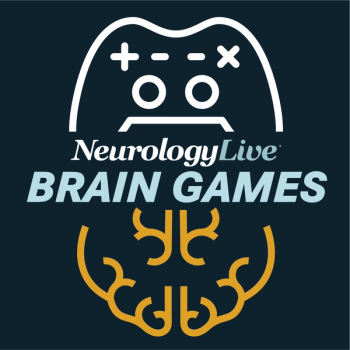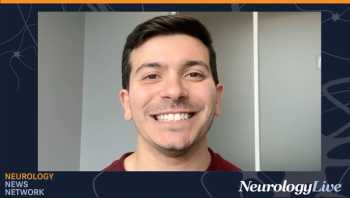
Merz’ IncobotulinumtoxinA Begins Phase 3 MINT Trials for Migraine Prevention
Key Takeaways
- MINT-E and MINT-C trials assess incobotulinumtoxinA for episodic and chronic migraine prevention, enrolling 1770 adults across North America and Europe.
- The primary endpoint for both trials is the change in monthly migraine days over a six-month period, with secondary endpoints including headache days and acute medication use.
Merz initiates phase 3 trials for Xeomin, targeting migraine prevention in adults, aiming to fill gaps in current treatment options.
Patient dosing has begun for 2 new, large-scale, phase 3 trials, dubbed MINT-E (NCT07018700) and MINT-C (NCT07018713), that test the therapeutic safety and efficacy of incobotulinumtoxinA (Xeomin; Merz Therapeutics) as an option for episodic and chronic migraine in adults.1
Each of these trials will include the opposite patient population, with MINT-E comprising those with episodic migraine, defined as less than 15 headache days per month, while MINT-C includes those with chronic migraine. The studies, which are currently enrolling, are expected to include 1770 adults with migraine across 120 sites in North America and Europe.
"Despite the availability of multiple treatment options, the need remains for additional options for prevention of migraines," Stefan König, chief executive officer at Merz, said in a statement.1 "The enrollment of the first patients in the MINT trials marks an important milestone as we aim to address persistent gaps in migraine care by advancing a new neurotoxin option for patients."
Similar to other botunlinum toxin products, Merz’ incobotulinumtoxinA works by blocking nerve signals that cause muscle contraction, leading to reduced muscle activity in targeted areas. Unlike some other formulations, Xeomin is free of accessory proteins, containing only the active neurotoxin. The medication was first approved in Germany in 2005 for neurological indications and reached the United States in 2010 for cervical dystonia and blepharospasm in adults.
MINT-E and MINT-C will both use change in monthly migraine days, evaluated over a 6-month period, as the primary end point. Other secondary end points for the trials include changes in monthly headache days, acute medication days, and migraine frequency during the 2-week periods at the end of each injection cycle.
To qualify for MINT-E, patients must be younger than 50 at migraine onset, have lived with episodic migraine for at least 12 months, and consistently report 6 to 14 migraine days per month. Patients are excluded if they have chronic migraine, rare subtypes such as hemiplegic or retinal migraine, or most other primary and secondary headache disorders (except tension-type and medication overuse headache). Use of more than one preventive migraine medication, or discontinuation of an anti-CGRP or anti-CGRP receptor monoclonal antibody within 5 months before screening, are also grounds for exclusion.2
READ MORE:
For MINT-C, eligible participants must report at least 15 headache days per month, including 8 or more migraine days, consistently over the 3 months before screening and during the 28-day screening diary. Exclusions apply to those with other primary headache disorders (except tension-type), rare migraine subtypes such as hemiplegic or retinal migraine, or secondary headache disorders other than medication overuse headache. Similar to MINT-E, the study excludes the use of anti-CGRP/anti-CGRP receptor antibody therapy or previous use of such medications within 5 months of screening.3
"These trials were designed with the patient experience at the forefront — from trial design and eligibility criteria that reflect current migraine patterns to endpoints that capture the full impact of migraine on daily life," Stefan Albrecht, chief scientific and medical officer at Merz, said in a statement.1 "By ensuring representation across both episodic and chronic migraine, we aim to generate data that is not only clinically robust but also deeply relevant to the people we hope to serve."
After the initial U.S. approval in 2010, incobotulinumtoxinA gained several other indications between 2015 and 2019, including for upper limb spasticity in adults, later expanded to pediatric patients. It currently remains approved in several other regions globally, including Europe, Canada, Latin America, and Asia.
REFERENCES
1. Merz Therapeutics Announces First Patients Enrolled in Two Phase III Trials Investigating XEOMIN® (incobotulinumtoxinA) for Migraine Prevention. News release. Merz Therapeutics. August 25, 2025. Accessed August 26, 2025. https://www.businesswire.com/news/home/20250822411240/en/Merz-Therapeutics-Announces-First-Patients-Enrolled-in-Two-Phase-III-Trials-Investigating-XEOMIN-incobotulinumtoxinA-for-Migraine-Prevention
2. A Clinical Trial to Evaluate Efficacy and Safety of Xeomin® Injections for Preventing Episodic Migraine (MINT-E). Clinicaltrials.gov. Updated August 14, 2025. Accessed August 26, 2025. https://www.clinicaltrials.gov/study/NCT07018700?intr=NCT07018700%20&rank=1
3. A Clinical Trial to Evaluate Efficacy and Safety of Xeomin® Injections for Preventing Chronic Migraine (MINT-C). Clinicaltrials.gov. Updated August 14, 2025. Accessed August 26, 2025.
Newsletter
Keep your finger on the pulse of neurology—subscribe to NeurologyLive for expert interviews, new data, and breakthrough treatment updates.



































